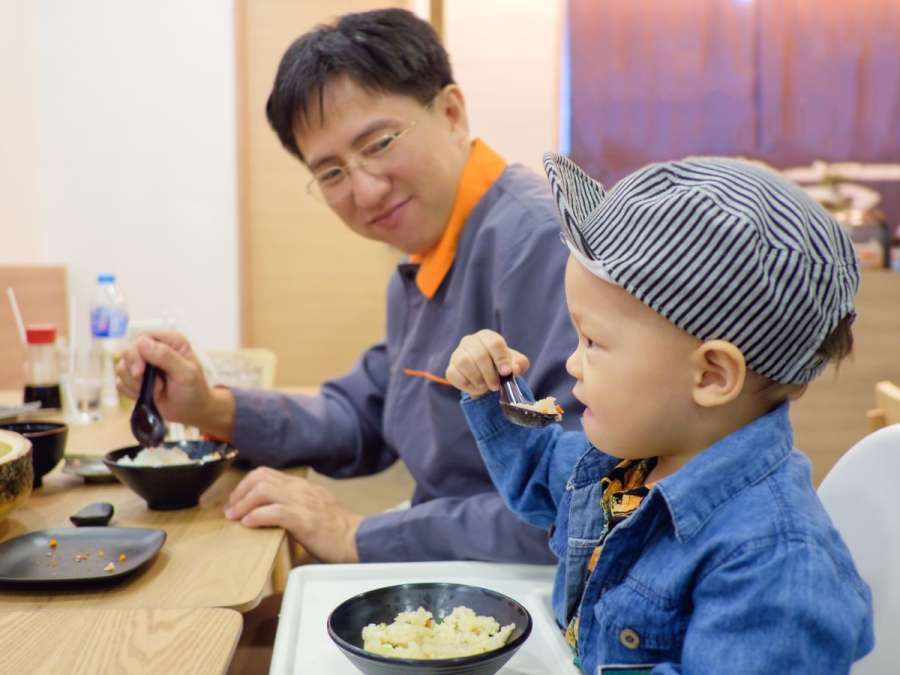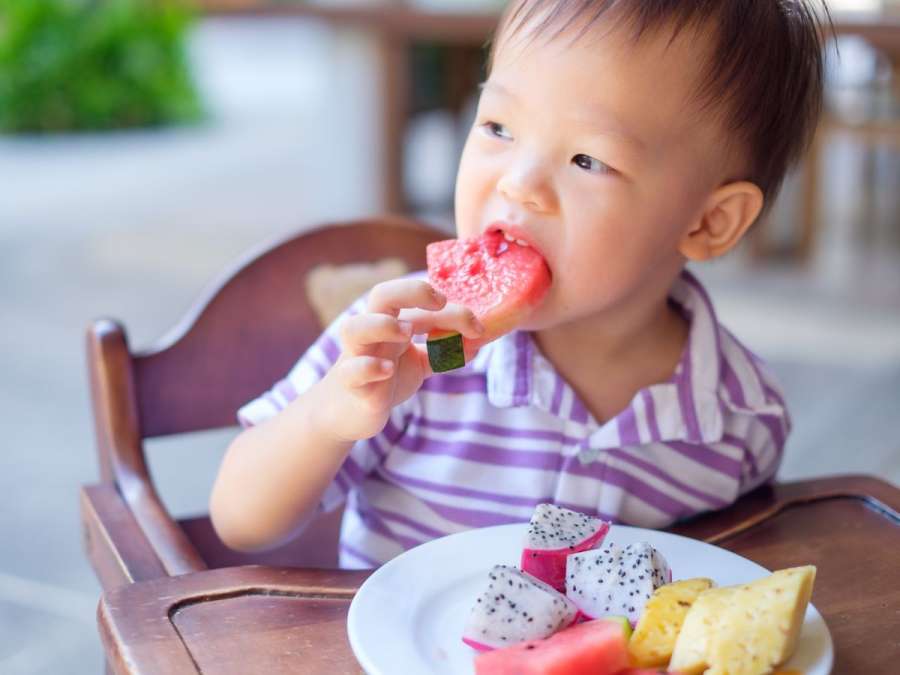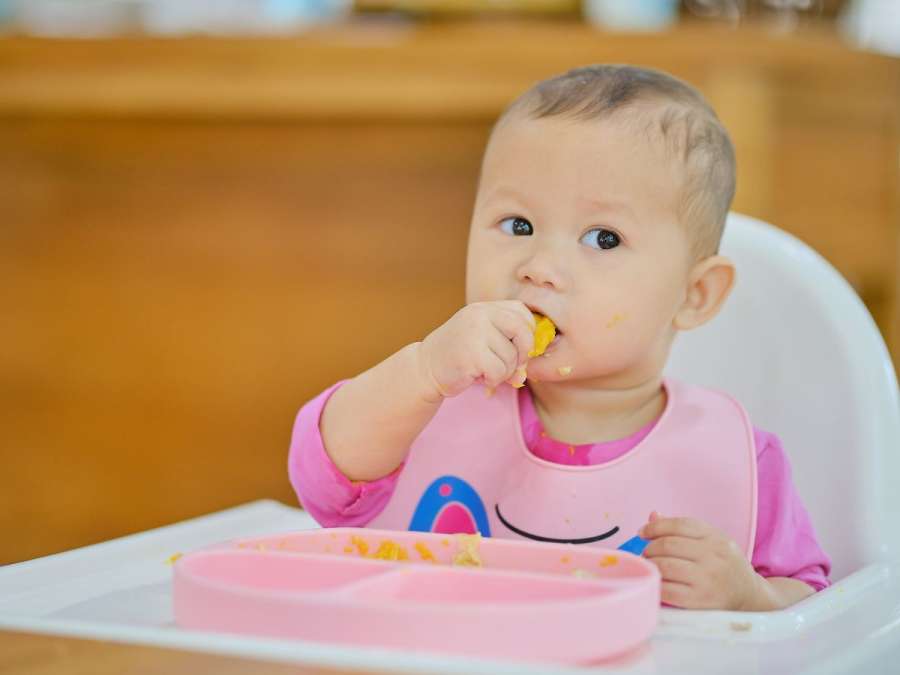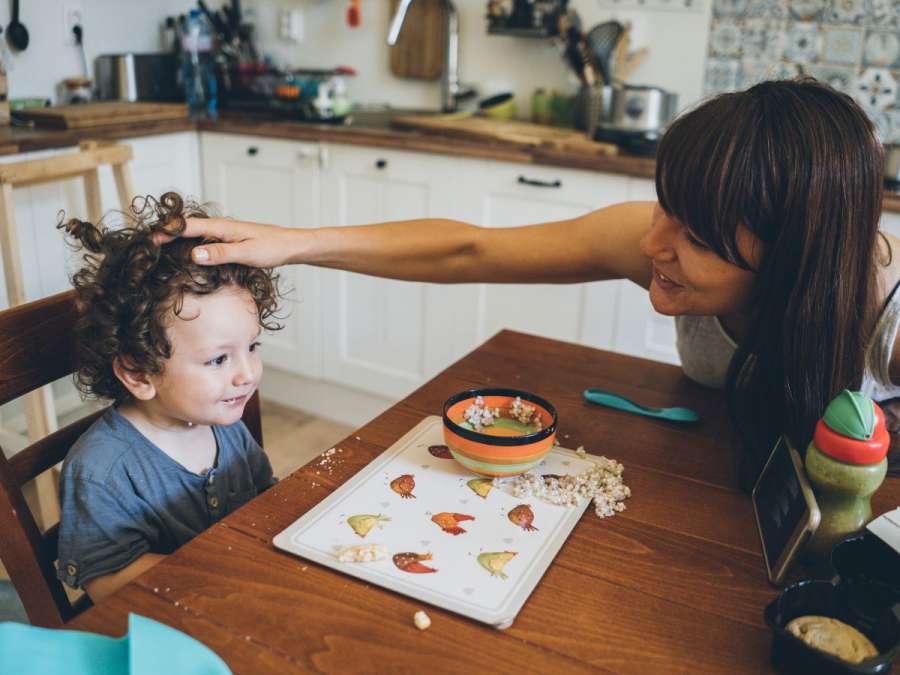As your little ones grow and learn to do more things by themselves, encouraging self-feeding in toddlers becomes an important part of their development. It is important to build healthy eating habits and a positive relationship with food from an early age. This article will explore practical strategies and tips to help parents encourage self-feeding in their toddlers. This practice will also build confidence, motor skills, and love for nutritious foods.
Encouraging toddlers to feed themselves is a transformative step that empowers them and develops essential motor skills. It is a fun journey to watch, with some messy moments and successes too. In this guide, we cover the art of building self-feeding in toddlers by giving you tips and strategies to build their confidence and skill. From introducing utensils to embracing the messiness of mealtime, let us explore how those little hands can achieve big things, one bite at a time.
1. Signs of Readiness for Self-Feeding
Recognizing the signs of readiness for self-feeding sets the stage for a successful and enjoyable journey.
a. Interest in Food
Toddlers who are curious about food and eat at regular times are ready to try self-feeding.
b. Fine Motor Development

Developing fine motor skills, such as picking up objects with their fingers, indicates their readiness to self-feed.
c. Desire for Independence
Toddlers may desire independence and insist on trying to feed themselves. As they grow a little and see everyone around eating themselves, toddlers might try copying that.
2. Creating a Positive Mealtime Environment
A positive mealtime environment sets the tone for enjoyable and successful self-feeding experiences.
a. Family Meals
Engage in family meals whenever possible. This allows your toddler to observe and copy adult eating habits.
b. Avoid Pressure

Avoid pressuring your toddler to eat or finish their food. Offer a variety of options and let them explore at their own pace.
c. Praise Efforts
Encourage and praise your toddler’s attempts at self-feeding, regardless of the mess or level of success.
3. Introducing Finger Foods
Let your toddler try finger foods that are right for their age. This helps them learn to feed themselves with what is there.
a. Soft and Bite-Sized
Choose soft and bite-sized foods that toddlers can handle. This can include foods such as cooked vegetables, fruits, and cheese cubes.
b. Food Variety

Offer a variety of finger foods to expose your toddler to different tastes, textures, and colours.
c. Safe Foods
Make sure that your finger foods are safe and free from choking hazards. Keep an eye on your toddler as they start self-feeding. But, remember not to interfere as it can make them leave the food or show fussiness.
4. Child-Friendly Feeding Utensils
Investing in child-friendly feeding utensils helps your toddler’s self-feeding journey.
a. Toddler-Sized Spoons and Forks
Give your toddler spoons and forks that are small and easy to hold. These are designed for their little hands. They can use them to pick up the right amount of food without any trouble..
b. Suction Plates and Bowls

Suction plates and bowls help prevent spills and keep the food within your toddler’s reach.
c. Open Cups
Transitioning from sippy cups to open cups promotes proper drinking skills and independence. This can be included once you see a change in their eating habits.
5. Messy but Meaningful: Embracing Messy Eating
Messy eating is a natural part of self-feeding and is crucial to a child’s sensory development.
a. Embrace the Mess
Let your toddler touch and taste different kinds of food, even if it gets a little messy during meals..
b. Sensory Learning

Messy eating supports sensory learning and hand-eye coordination as toddlers touch, feel, and explore their food.
c. Mealtime Cleanup Routine
Establish a mealtime cleanup routine that involves your toddler. This will teach them to clean after themselves while also making them responsible and cooperative.
6. Modelling Healthy Eating Habits
Showing healthy eating habits sets an example for your toddler to follow.
a. Eat Together
Eat together as a family and choose balanced and nutritious food choices. When you sit and eat with your toddlers, they will try copying you and hence understand the right way to eat.
b. Show enthusiasm

Show enthusiasm for trying new foods, as toddlers often try to copy the behaviour of adults. Have all sorts of food in front of them and make happy faces to engage your toddlers.
c. Avoid Food Restrictions
Avoid overly restricting foods and instead focus on moderation and balance. While eating healthy is the key, allow them to have all kinds of food so that they can expand their palette.
7. Patience and Persistence
Encouraging self-feeding requires patience and persistence as toddlers learn and grow.
a. Be Patient
Be patient and kind while your toddler learns to feed themselves. It might take a while for them to get really good at it..
b. Celebrate Progress

Celebrate when your toddler gets better and does things on their own, even if it’s a little step. Remember to say things like “You did great” and “Nice job” to encourage them.
c. Offer Support
Offer Support and assistance when needed, but allow your toddler to take the lead. This will help them learn from their mistakes.
8. Recognizing When to Seek Help
Knowing when to seek help and professional guidance is essential for your toddler’s well-being.
a. Extreme Food Refusal
If your toddler often says no to different foods, it’s a good idea to talk to a doctor. They can give you advice and help you figure out what to do
b. Oral Motor Difficulties

If your toddler has trouble chewing or swallowing, it is a good idea to talk to a speech-language therapist or a doctor.
c. Food Allergies or Sensitivities
Consult a paediatrician or allergist if you suspect food allergies or sensitivities.
Encouraging self-feeding in toddlers is a beautiful and transformative journey that promotes independence, confidence, and a positive relationship with food. By understanding the signs of readiness, creating a positive mealtime, introducing finger food, embracing messy eating, and being patient, parents can empower their toddlers to self-feed. Embrace this time with joy and love, as you are laying the foundation for a lifetime of healthy eating habits and a strong parent-child bond.
